LEGO KITS
There is an almost endless number of small models which can be created with just basic Lego elements. This page is devoted to showing just a small sample of what can be done. The goal is simply to spark imagination and creativity for children and others just beginning their Lego building adventure!
While these are actually small models
, they can easily
be used as kits
which can be given away as gifts or
prizes at parties or other social events. Each kit on this
page has a basic instruction video and/or printable PDF and
most also include a parts list. The models shown on this page
may not exactly match the related building instructions for
colors or style. This is due to the fact that the original
models use some elements which may not be as readily available
and were replaced with more common elements. Even so, the
model concept is the same.
These mostly use Lego elements which can be found on the Lego
Pick A Brick
(PAB) wall at Lego stores or in the assortment
boxes which Lego produces. Don't worry if there are parts
you do not have though, different elements and/or colors
can be used in many cases. For example, if you do not have
a 2x4 plate, you can use 2 2x2 plates or even 2 1x4 plates
to cover the same dimensions. These models can be built for
a minimal cost ($1-$5) if parts are obtained from the PAB
wall in store (cost is higher if ordered online).
Experimenting with other elements and layouts is an excellent way to learn about building variations! Once you understand building techniques, you can more easily create structures on your own.
Feel free to use these for personal use only. Please do NOT distribute these images, videos, PDF's, or instructions using ANY website, social media platform, or other publically accessible source. This helps to protect MY work and effort as the original designer/author.
KITS AVAILABLE:
ANIMALS
Simple animals can easily be constructed using basic Lego elements. While it is possible to create detailed animal models, the focus here is just on the basic shape in either a two or three dimensional model. Because simple animal builds are so basic, they are often interpreted as different animals by different people. Even so, the goal is to create something you enjoy and let others enjoy it in their own way also.
Sometimes specific characteristics can be included to help uniquely target a certain animal. A very long neck is usually a giraffe, humps indicate a camel, and a trunk is an elephant. Often these are added with just one or two additional pieces. It is also possible to make creative animals that do not exist, just use some of the parts in different places. With imagination you can create hundreds of simple animals using only basic Lego elements!
These instructions use only 24 different common Lego elements to keep things simple. There are many models which can be created using just these parts in different quantities. Once you understand the concepts, try using other Lego elements to modify these examples or create even more models of your own!
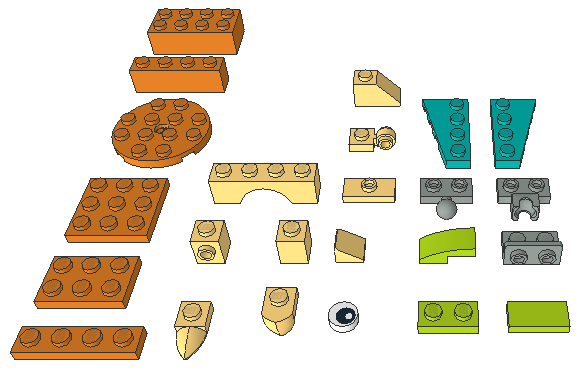
Download the PDF Instructions
BOOK NOOK
The Book Nook was created for a library promotion.
It is a simple little reading area which includes
a detachable book shelf and books. It is a fun
build designed for reading related activities.
This was created for a winter reading program, so
it has snow
hanging from the roof eaves
(which is optional). The Bookcase kit (below) was
designed as an extension of the Book Nook kit.
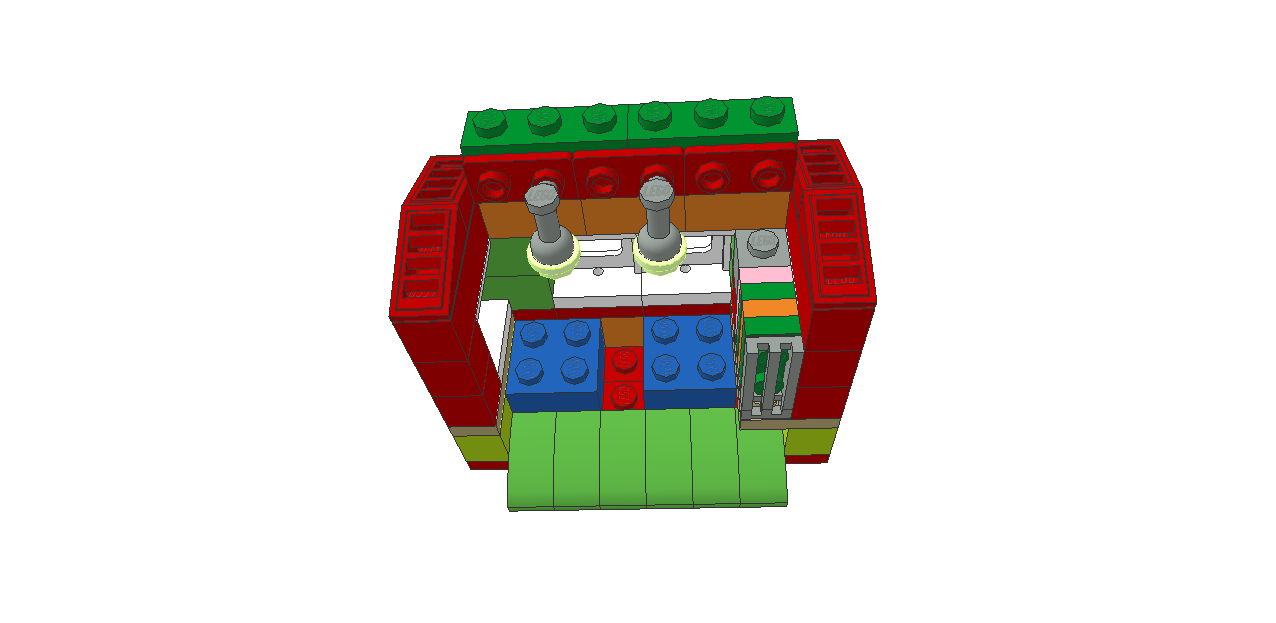
Download the PDF Instructions
VIDEO INSTRUCTIONS:
BOOKCASE
The Bookcase was created as an extension of the Book Nook kit, but also is good on its own. The bookcase shelves hold 5 books, which easily slide onto the shelf. This kit shows two ways to build the bookcase. Using the same technique, a taller or wider bookcase can easily be created.
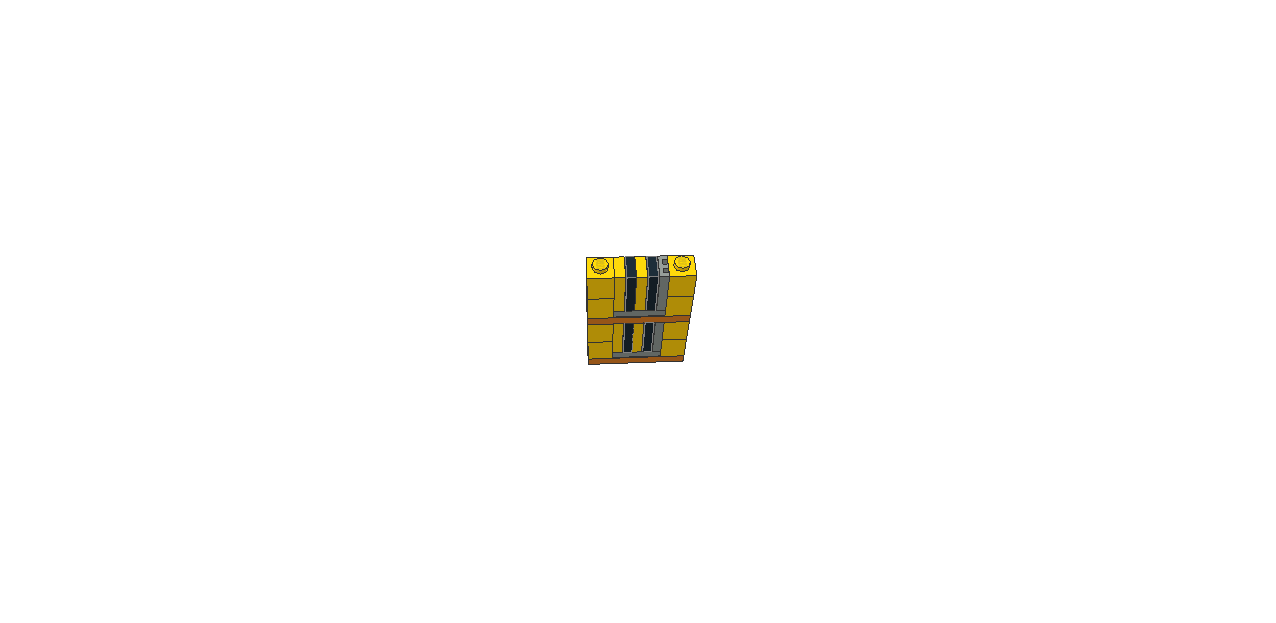
Download the PDF Instructions
VIDEO INSTRUCTIONS:
BOW TIE
The Bow Tie was created as a tribute to my father, but works well for Fathers Day or any formal social event. It is a very simple build but also shows one method to make different shapes using Lego elements.
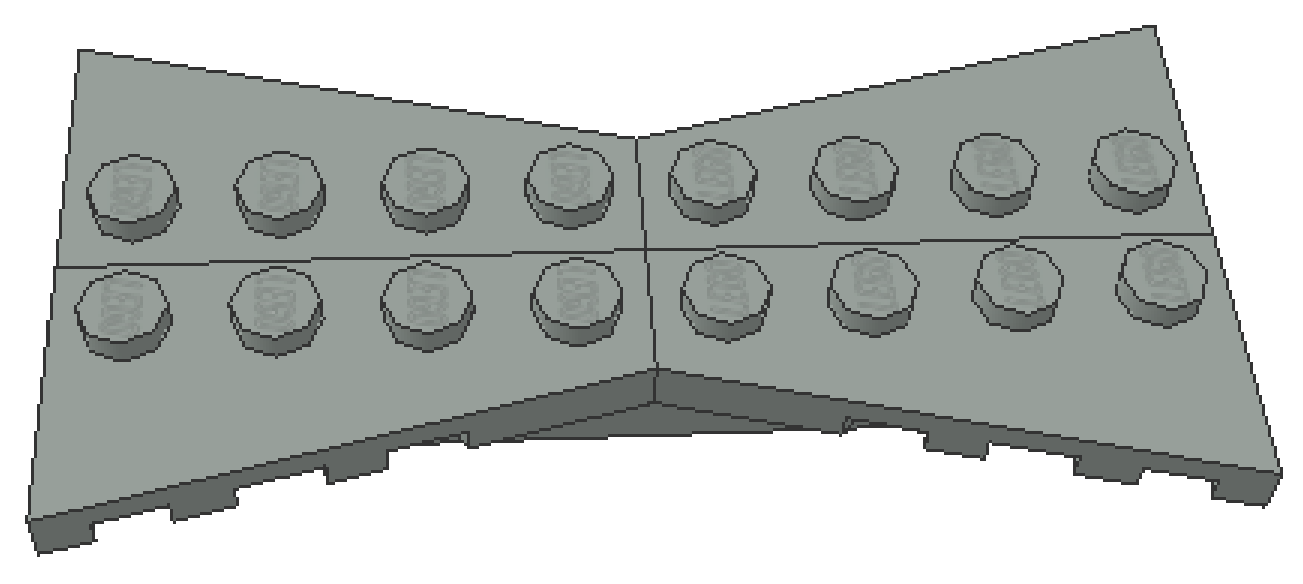
Download the PDF Instructions
CACTUS
The Cactus is a 6 inch tall 2 arm style of one variety of cactus. The same building concept could be used to create flower stems, bushes, or tree limbs.

Download the PDF Instructions
CUBE or DICE
The Dice kit is a fun way to create dice that you can actually play with. This kit shows how to build a 3x3 cube (perfect for dice faces). Once the cube is built it can be decorated into dice, rubix cube, or other square items. Using the same building concepts, larger cubes can also be built for a variety of other items.
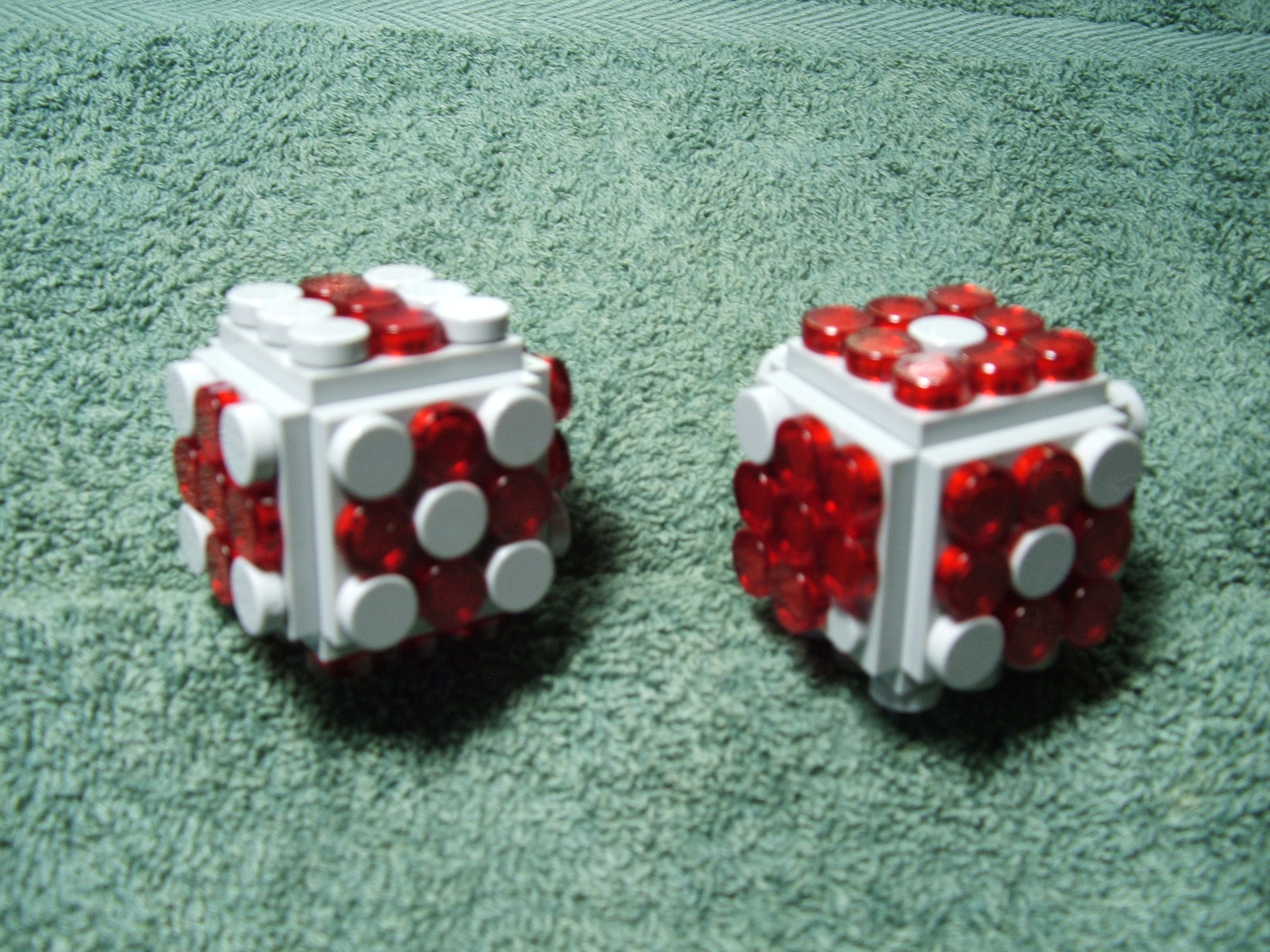
Download the PDF Instructions
VIDEO INSTRUCTIONS:
CABINET AND DRAWER
The Drawer kit includes a small cabinet with a removable drawer. This shows how to make models with parts that slide in/out. Using this technique, larger drawers or many other useful items can be made. A larger cabinet could be built to have multiple slide out drawers.
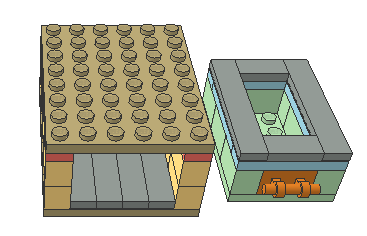
Download the PDF Instructions
GAZEBO
The Gazebo kit is a great addition to any
outdoor scene, either a back yard or a park.
It features a raised stage
and a
traditional 4 post anchored roof. It is
highly adaptable for shape and size based
upon the parts on hand.
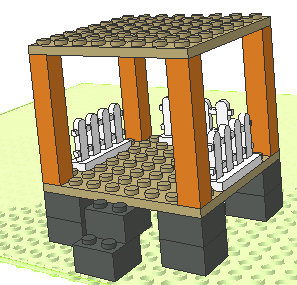
Download the PDF Instructions
MINI GOLF
This kit shows the basics of making a Lego Minature Golf display. The concept of using tiles for the smooth surface and assorted elements for obstacles is all that is really needed to get started. Imagination will allow you to create you own course!
Note that a few of the parts in the first image are shared between the two models. However, the parts list at the end of the instructions shows the actual parts for the base and each of the models individually.
Because it is hard to obtain larger (than 2x2) tiles at the Lego store, feel free to substitute smaller tiles as needed. Even 1x1 square tiles work well, but the 1x1 round tiles can cause the ball to have erratic movements.
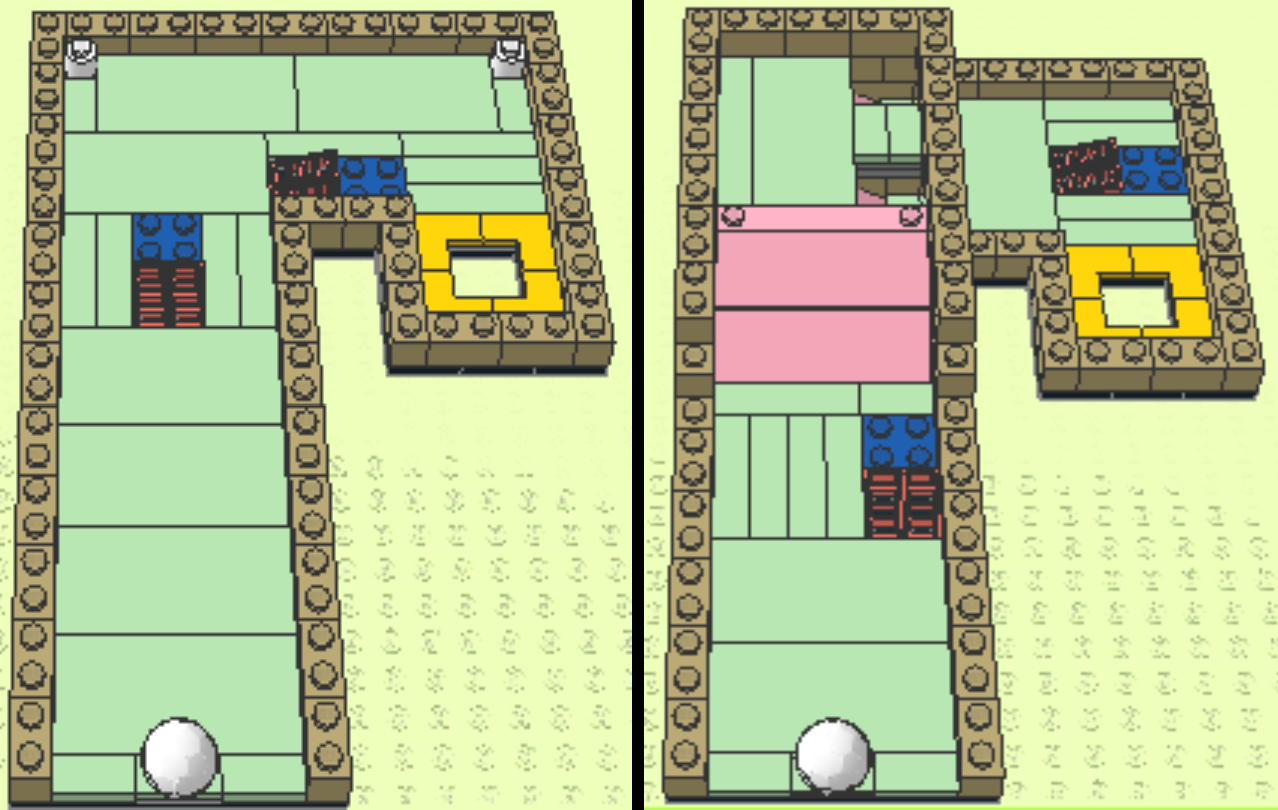
Download the PDF Instructions
PINWHEEL
A Lego pinwheel can be created in a variety of methods and styles. Here we will just show one way of doing a pinwheel using a Technic axle. The axle allows for the most freedom of spinning, as oppossed to other Lego swivel elements. Feel free to use any combination of elements to create your own stems, swivels, branches, and pedals.
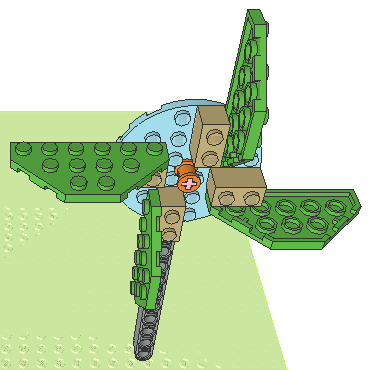
Download the PDF Instructions
SHED
This simple little shed shows the basics of creating a structure with a door and window. The same techniques are used to build larger models.
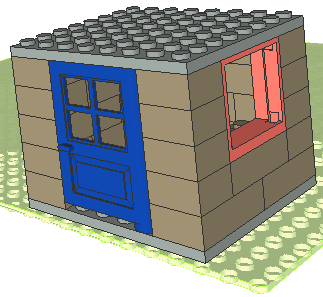
Download the PDF Instructions
VIDEO INSTRUCTIONS:
Page last updated: August 12 2022 17:43:55.
Page visited: 1141
